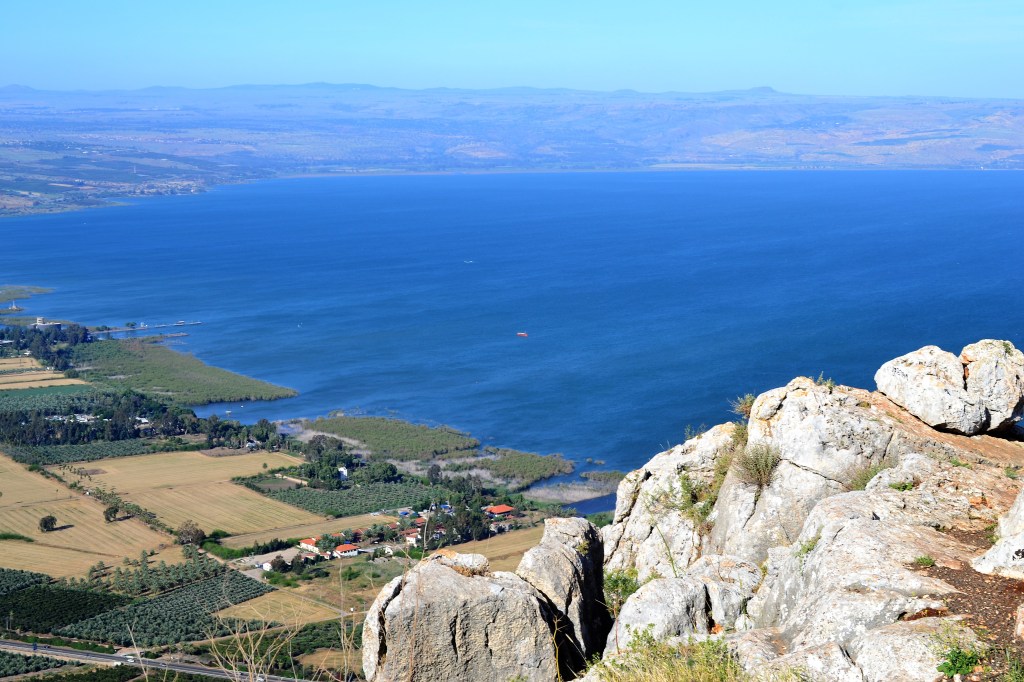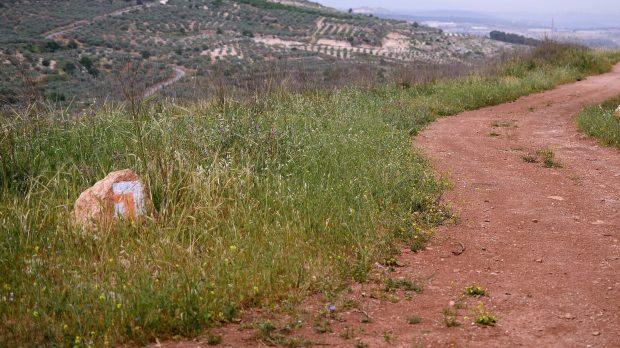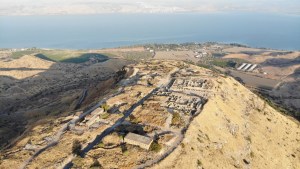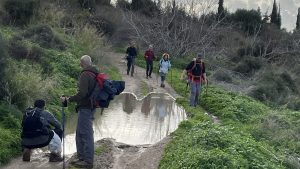Tourists who wander around the Holy Land often do so by bus. They visit some landmarks, get off the bus, take a good look around, pray, buy some souvenirs, and hop back into their seats. Whereas there is nothing wrong with that, Jesus’ experience was quite different. The Gospel of Matthew states that he “went through all the towns and villages, teaching in their synagogues, proclaiming the good news of the kingdom and healing every disease and sickness.” Having no buses available back then, it is only natural to assume he wandered through the land on foot – that’s the experience that the Jesus Trail intends to offer.
There is something radically biblical about walking from town to town. It implies meeting random people on the road – and not just visiting specific places, however significant they may be. In fact, Christians and non-Christians alike are often eager to know more about the man who walked from town to town preaching a message of love and forgiveness – and about the places he visited as well.
That is the case of two hiking specialists, Maoz Inon (an Israeli Jew) and Dave Landis (an American Christian). Together, they launched a unique experience in the Holy Land: the Jesus Trail, a pilgrimage route that runs from Nazareth to Capernaum, following in the footsteps of Jesus’ own public life.

The idea was born after Inon and Landis walked the Israel National Trail, a route crossing the country from north to south, packed with biblical references and landmarks. In an interview with Aleteia, they explained their shared vision:
“We wanted to create a route so that people could walk the trails Jesus himself walked. Sounds a bit simple, right? But the thing is that pilgrims usually come to the Holy Land on a tour bus, with a guide. You get off the bus, you walk to the site, and walk back to the bus. You get into the air conditioning. You don’t really get to see people, to connect with locals. And I think what we both had felt during our travels was that we could create something where people were not just walking the land but getting to know the people, their differences, their particularities – it is a different way of getting to know the place, and relating oneself to its long, complex history.”
The Jesus Trail: Not only Nazareth and Capernaum
The route follows the path that Jesus must have walked more than once from his hometown to Peter’s – that is, from Nazareth to Capernaum. It is 64 kilometers (40 miles) long, all properly signed, and goes through several places dear not only to Christians but to other Abrahamic traditions as well: Zippori, Mash’da (the place tradition claims is the birthplace of the prophet Jonah), Magdala, Tabga (where the miracle of the loaves and fishes took place), the Mount of Beatitudes, all the way to Capernaum, crossing the fertile valley of Yizreel, the hills of Arbel, the horns of Hattin, until it reaches the northwestern shore of the Sea of Galilee. The project is supported by the Israel Trails Committee of the Society for the Protection of Nature in Israel (ASPNI) and the Lower Galilee region.
A trail covering Jesus’ public life
There is yet another trail, launched by Israel’s Ministry of Tourism, that follows a very similar route – the Gospel Trail. However, the experiences these two trails offer are quite different. As Landis explains, “people who choose the Jesus Trail do it because it offers a quite distinctive opportunity: that of meeting people just as Jesus did, where he did it.”
“When you’re walking through the olive groves of Galilee, you find shepherds tending to their sheep. You see a local family having a picnic, and you get the feeling of seeing the things Jesus saw when he walked the land, how he met people from different communities, from different walks of life. These are different times, no doubt, but the experience remains the same. It’s the same feeling, the same places, the same excitement, the very same story. That’s what it means to me,” Inon explains.
“I think of Jesus going to meet his enemies, and that’s the most significant part of it all. Yes, he probably got himself killed for loving his enemies and accepting hospitality from strangers,” Landis adds.
You can find more information about the Jesus Trail here. You can also buy the trail guide here.



